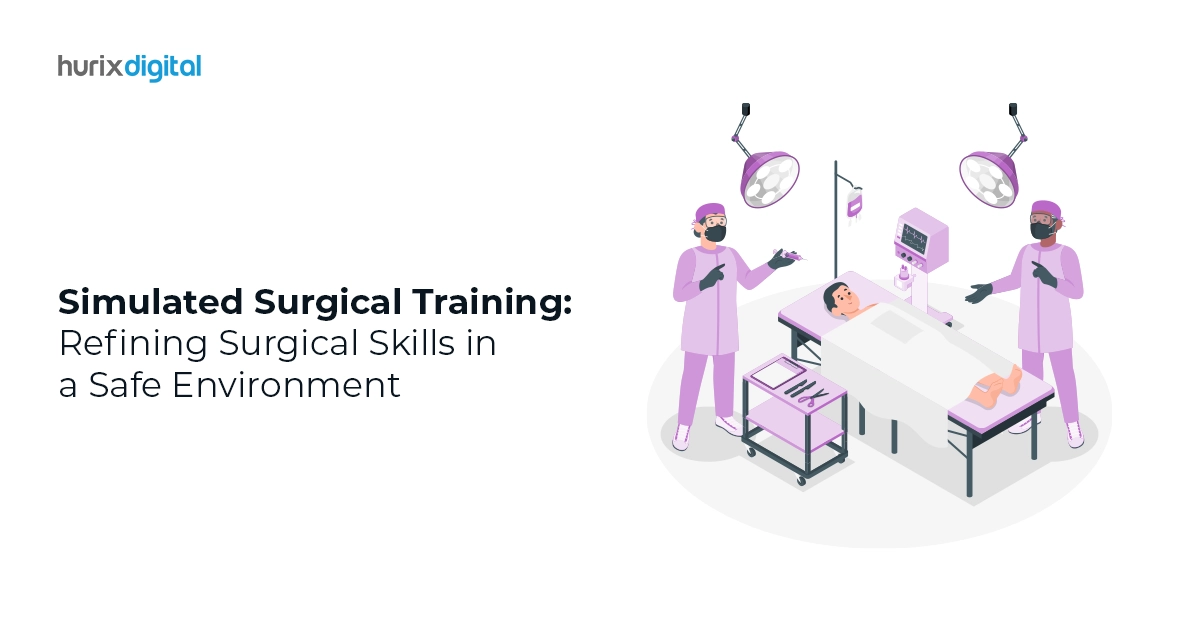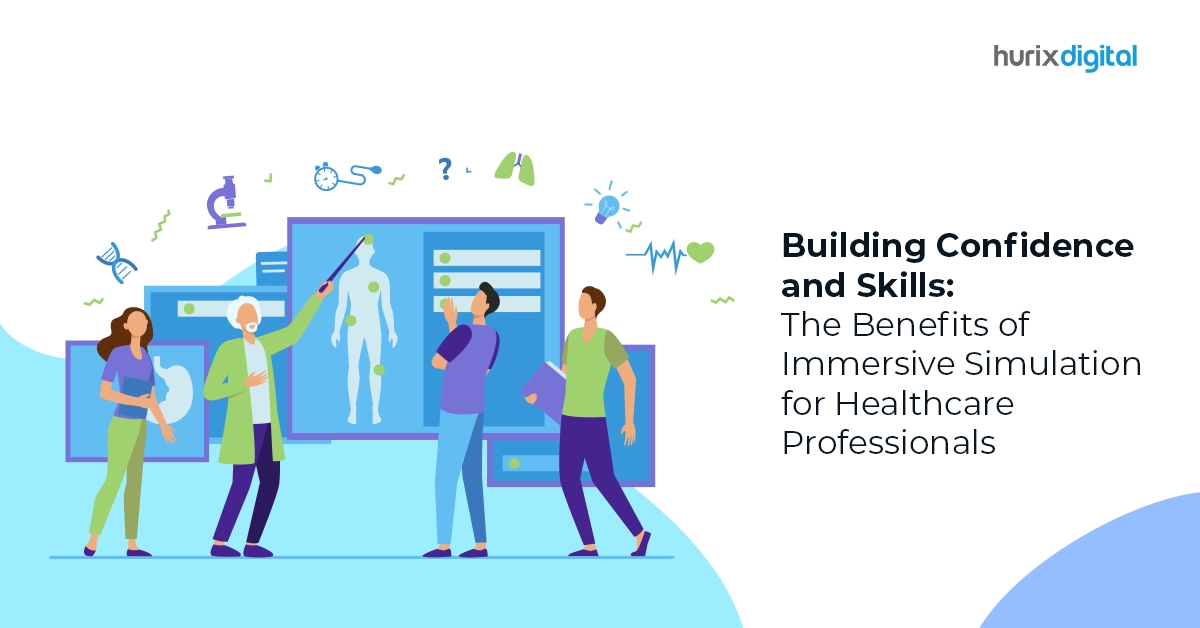
Simulated Surgical Training: Refining Surgical Skills in a Safe Environment
Summary
Learn about the advantages of simulated surgical training. This blog discusses how simulations can help refine surgical skills and improve safety in medical procedures.
Complex and intricate surgical procedures demand accuracy, precision, and proficiency. Surgeons are experts who perfect this art with years of practice and acquisition of experience through a series of extensive clinical practices.
However, there is an obvious disadvantage with traditional methods of training because they cannot provide enough experience to a student before he can operate a live patient. This is where simulation training comes into the picture.
Simulated surgical training provides an opportunity for surgeons to perfect their skills in a safe environment—where it is okay to make mistakes and learn without compromising the patient’s safety.
Table of Contents:
- Understanding Simulated Surgical Training
- Benefits of Simulated Surgical Training
- Types of Simulated Surgical Training Methods
- Simulated Surgical Training Challenges and Limitations
- Final Thoughts
Understanding Simulated Surgical Training
Simulated surgical training refers to a process that replicates actual operations using highly technological devices coupled with realistic models. From virtual reality simulations to sophisticated physical models mimicking human anatomy, many types of simulations have been employed in many cases over time.
Also Read: Healthcare Data Security: Ensuring Privacy and Compliance in App Development
Benefits of Simulated Surgical Training
Surgery is not only an art but also a science that demands carefulness, talent, and skill. Behind those operating room drapes are doctors who have triumphed over years of healthcare education and hands-on experience. There are several advantages associated with simulated surgical training for both surgeons and patients. Some of these benefits are as follows:
- Safe Learning Environment: Simulated surgical training offers a safe learning environment where surgeons can practice their skills without hurting patients; thus, they can learn from their mistakes through trial and error.
- Repetitive Practice: The simulated environments allow surgeons to repeat procedures to enhance their muscle memory and surgical techniques. This repetitive practice ensures increased efficiency and reduces the number of errors during real operations.
- Realistic Scenarios: Simulated surgical training presents realistic scenarios that mirror actual clinical surgical procedures. Such realism helps prepare the trainee for the challenges he may face, such as in the operating room, unexpected complications, or variations in anatomy.
- Objective Feedback: Feedback given by simulated training systems is objective, giving surgeons room for improvement. Therefore, this feedback can assist them to improve on their skill than subjective feedback alone.
- Skill Standardization: Standardized skill assessment and competency evaluation are made possible by simulated surgical training, hence ensuring a uniform level of instruction to all surgeons who have attained specified proficiency levels before the beginning of surgeries.
Types of Simulated Surgical Training Methods
Surgical training is important for doctors who wish to acquire skills and self-belief in doing various types of operations. Over the last few years, simulated surgical training has become an integral part of medical education. Simulated training offers healthcare professionals a chance to perfect surgical skills in a controlled setting before they attempt them on real patients. The following are some types of simulated surgical training.
- Virtual Reality (VR) Simulations: Virtual reality simulations offer trainees an immersive experience where they can interact with life-like surgical scenarios within a virtual environment. These simulations often involve the use of specialized equipment, such as headsets and haptic feedback devices, that mimic what it feels like during an actual surgery. Interns can practice procedures repeatedly until they have mastered the skill, hence feeling self-assured without risking anyone’s life.
- Surgical Skills Labs: Surgical skills labs are physical spaces equipped with surgical instruments, simulators, and models that mimic human anatomy. Trainees make use of these models to learn basic and advanced surgical techniques while under supervision from experienced tutors. Such facilities enable students to acquire practical knowledge, which helps them develop the skill, precision, and muscle memory required for carrying out surgeries.
- Cadaver Training: It is possible to learn surgery using dead human bodies. Dead bodies help surgical trainees practice and work on surgery with real-life-like experiences in a surgical room setting. Such training is particularly helpful for learning complicated techniques and appreciating variance in anatomy.
- Animal Models: Some surgical training programs use animal models such as pigs or rodents to mimic surgical procedures. Trainees can practice certain techniques on these models before applying them to human beings; hence, it provides an opportunity for the same. As much as this can be disputed due to ethical matters, animal models offer practical experience in medical school.
- Surgical Simulation Software: With the help of the simulation software, learners can now undertake different surgeries virtually through computer-based simulations. Usually, these software packages have realistic 3D representations of anatomical structures that let students perform virtual operations with virtual surgical equipment being used. The inclusion of feedback mechanisms within the system also enables trainers to closely follow the progress of their students and consequently develop their skills further.
Simulated Surgical Training Challenges and Limitations
Here are some challenges when implementing simulated surgical training challenges.
- Simulated Surgical Training Equipment & Facilities: The cost of this training equipment can be high and beyond the reach of many institutions that would otherwise avail aspiring surgeons the opportunity to train.
- Access to Training Resources: In some developing countries or rural settings, not all surgeons can access well-designed simulation resources. This discrepancy in accessibility may expand regional surgical competency disparities.
- Ethical issues: The use of animals and dead human bodies in simulated surgical training is a subject of ethical concern as it raises questions about animal rights and respect for human remains. Proper handling of corpses and humane treatment of animals necessitates adherence to ethical guidelines as required by law.
- Integration into Surgical Education: Several challenges come with integrating simulated surgical training into traditional surgical education curricula. Thus, there must be an institutional commitment to develop structured programs with dedicated time and resources for productive incorporation among beginners in the surgery field.
Also Read: How to Improve Accessibility in Healthcare Setting?
Final Thoughts
In a nutshell, the significance of simulated surgical training is that it provides an environment for enhanced surgical aptitudes and improved patient outcomes. In this way, simulated training creates a secure and real-world learning environment where surgeons can improve their skills before they perform surgical operations on real patients.
The future of simulated surgical training looks promising with continuing technological advancements that will lead to numerous benefits not only for surgeons but also for patients and healthcare systems all over the world. Moreover, if you are searching for an online platform to implement your simulation training in healthcare seamlessly, Hurix Digital can be your ideal partner.
To learn more about Hurix Digital‘s innovative digital learning solutions, reach out to us.

Senior Vice President
A Business Development professional with >20 years of experience with strong capability to sell new solutions and develop new markets from scratch. New Market Entry Specialist with experience of working in two of the largest emerging markets – China & India. Also covered other key markets in APAC, US, EU & ME. Exceptional experience of conceptualizing, ideating and selling new learning technologies like VR AR, etc. across multiple industry verticals.







